Namibia Independence Museum – See it First
Almost every visitor to Namibia starts by touching down in Windhoek, the modern and clean capitol of this amazing country. Windhoek is not per se a tourist destination, but it does have a couple of attractions that will foster your understanding of Namibian history and culture and make your journey through the country more fulfilling. Foremost of these is the Namibia Independence Museum which is housed in the most impressive building in Windhoek.
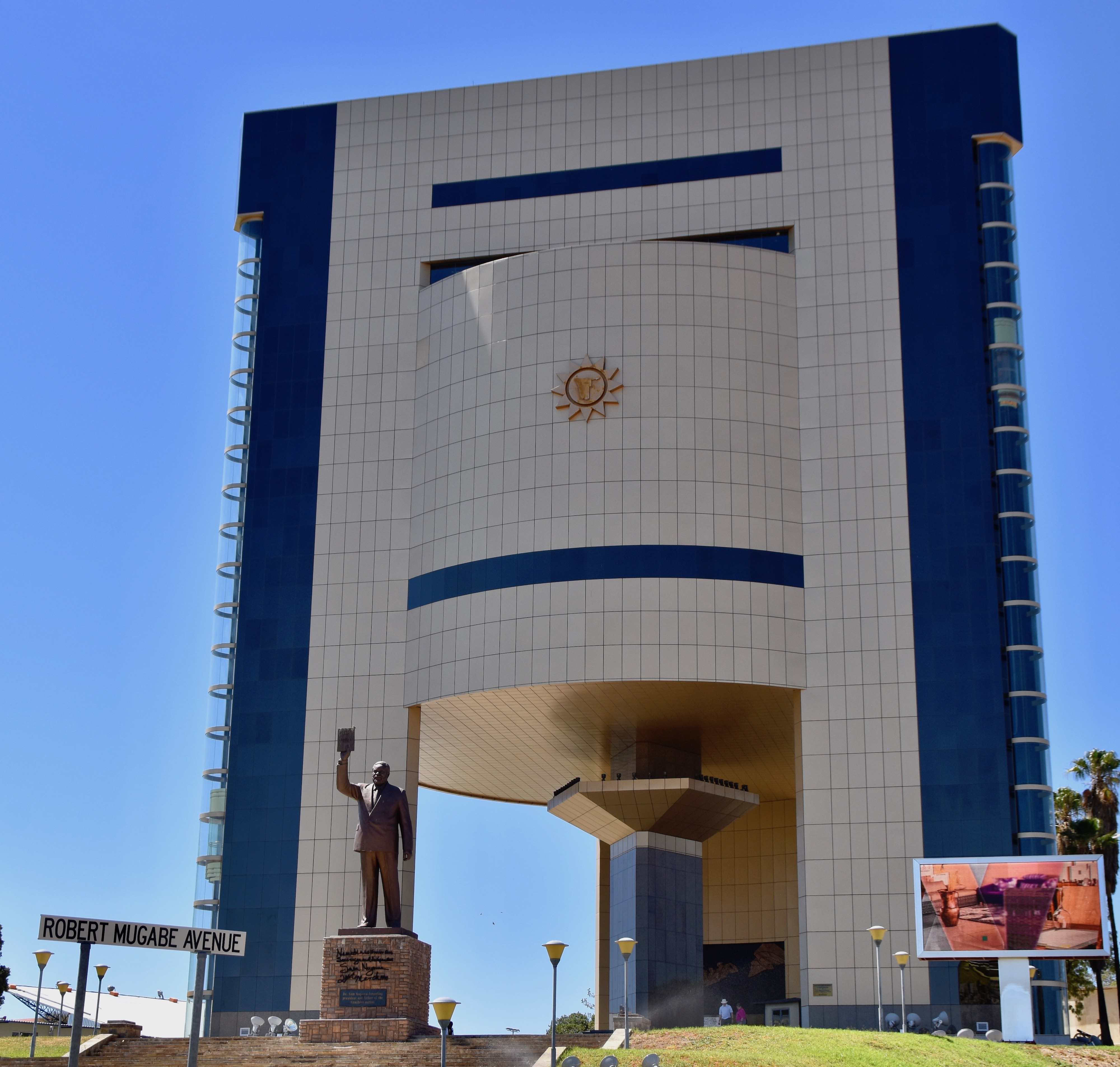
The building sits high on a hill overlooking the most impressive building from the German colonial era, the Christuskirche. Constructed by a North Korean firm of all things, it opened in 2014 with the express purpose of documenting the century long struggle for independence that pitted the native Namibians against first the Germans and then the South African apartheid regime. The struggle ended with independence in 1990. It is no coincidence that from within the glass elevators that go up both sides, Namibians can look down on the remnants of the colonial past.
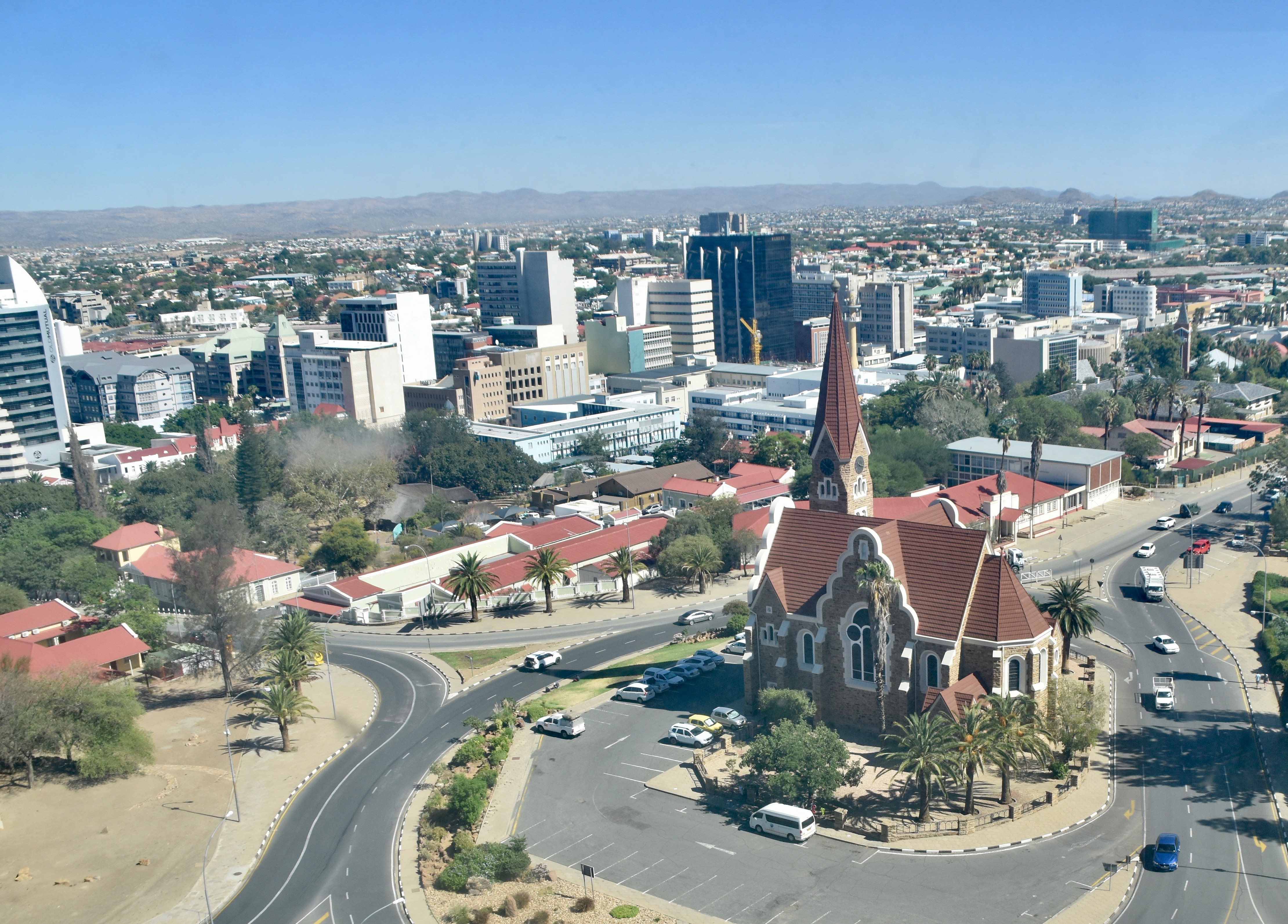
It is also no coincidence that the statue in front of founding father and first President Sam Nujoma replaced the Südwester Reiter, a monument to Germans killed in the Herero/Namaqua war of 1904-1907 – more about that later. Here’s what was there until it was removed in 2009, a clear symbol of white superiority which the Germans built and the South Africans declared a national monument.
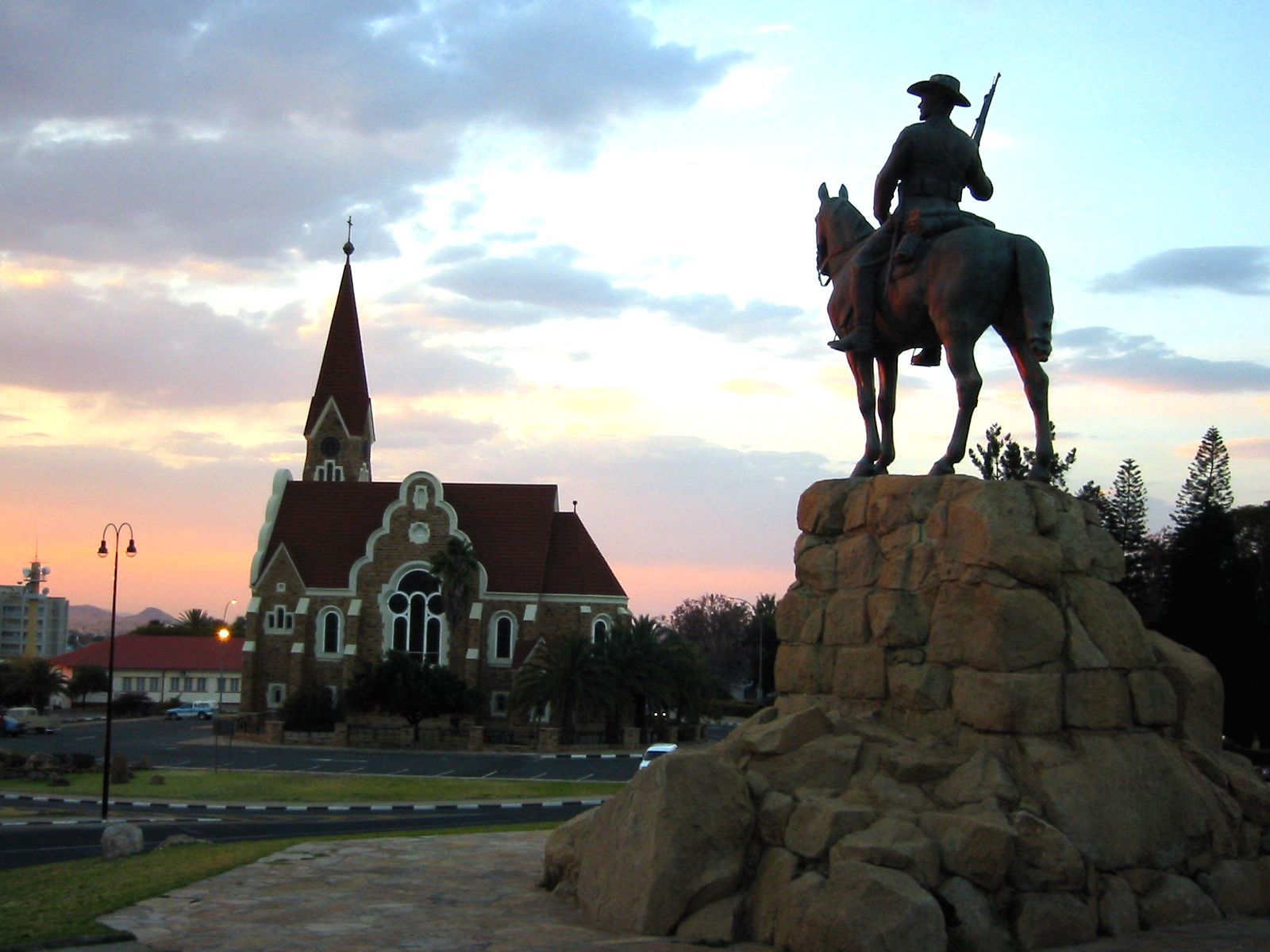
Entrance to the Namibia Independence Museum is free. You start by taking an elevator up to the first floor and then retaking it up to the second and third floors which house the museum. However, you should really start by going all the way to the top floor so you can get the great view in the photo above.
Namibia Independence Museum – Floor 1, Colonial Repression
Returning to the first floor you step out to see two great wall paintings. The first depicts, in realist style, the leaders of the fight to throw off the yoke of the Germans in the colonial era in what is referred to in Namibia as the First Wars Era.
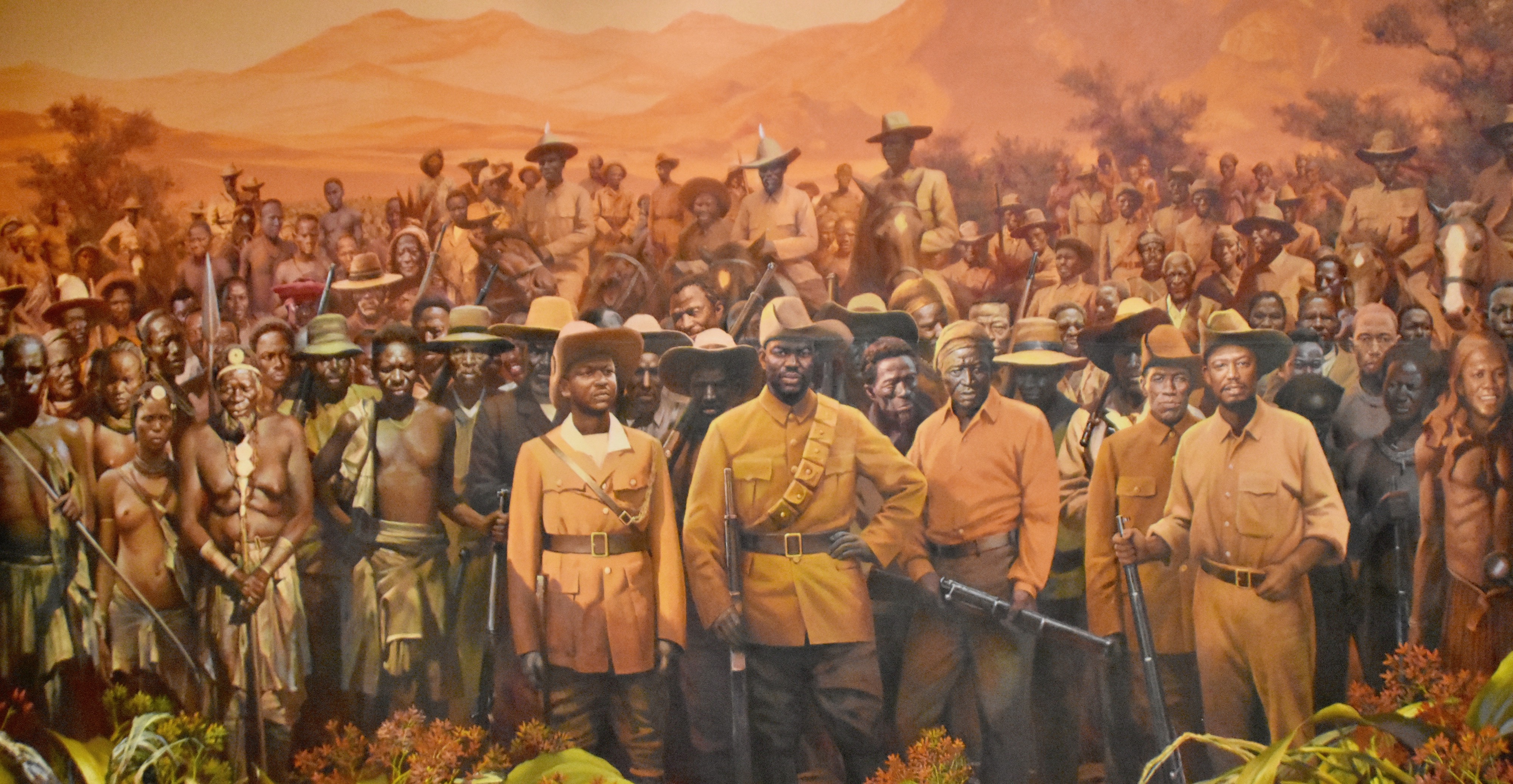
The second painting, which faces the first across the large room, depicts the leaders of the fight for independence from South Africa or the Second War Era.
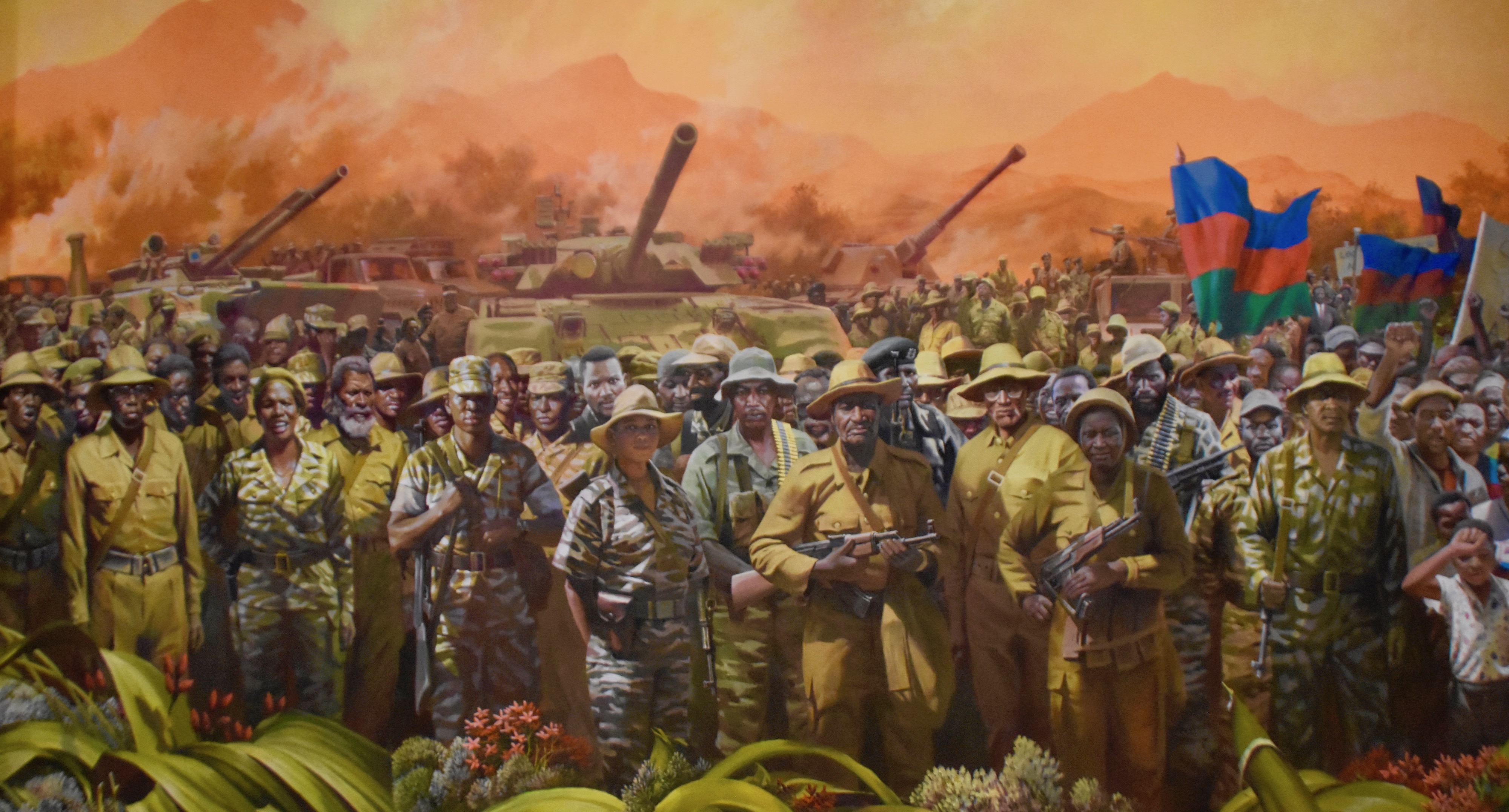
These two paintings give you a heads up as to how the story of Namibian independence will be told – much more visually than by way of the written word. These huge paintings and others to come reminded me very much of the manner in which the story of Mexican independence has been told by the its famous muralists – Rivera, Orozco and others. In a country like Namibia, with literally dozens of spoken and written languages, using the power of the visual image that is understandable to all who see it, is much more effective than a written explanation.
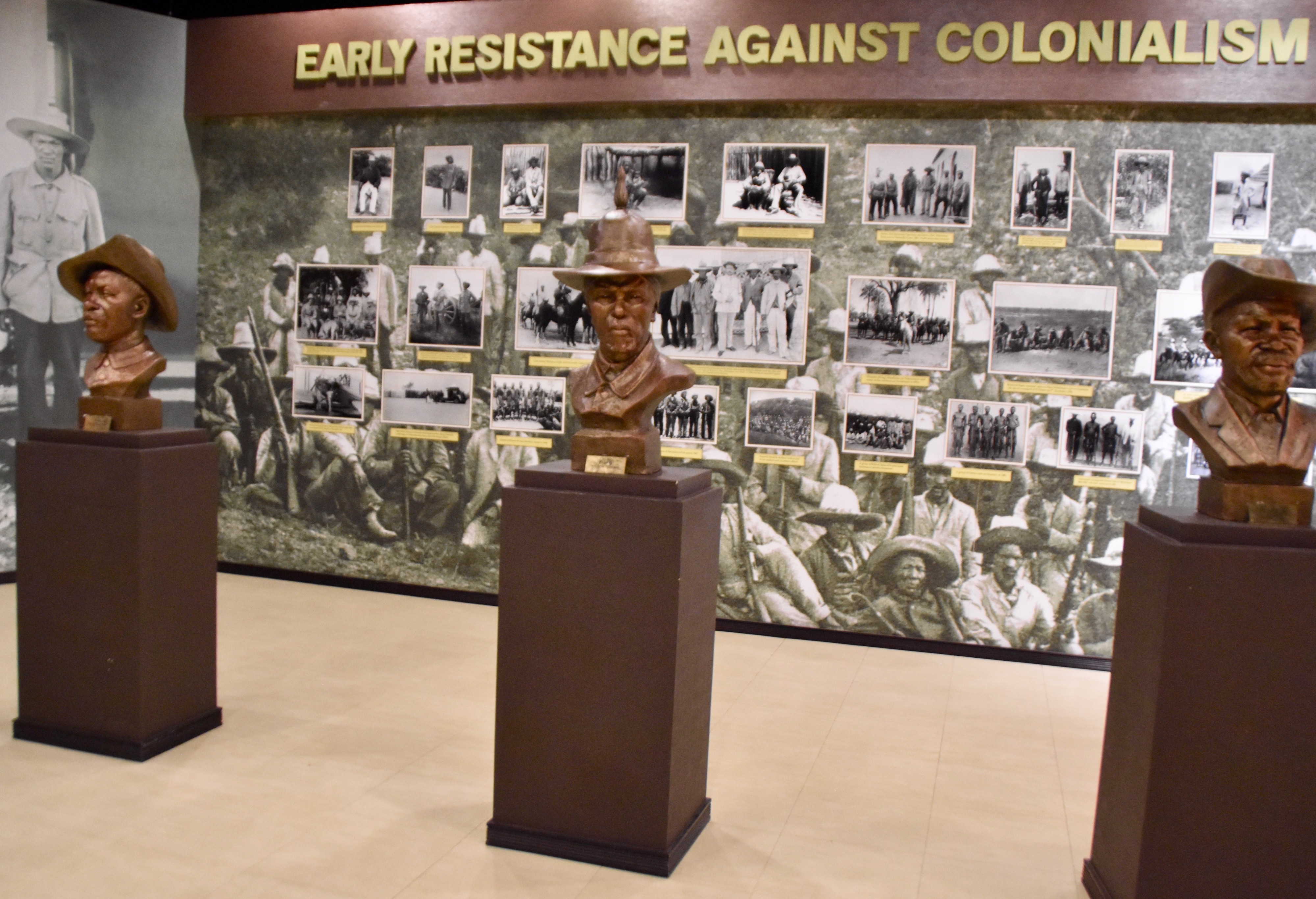
Germany was very late to the African colonization movement by European powers that began with the Portuguese in the 16th centuries and continued unabated for another almost 400 years. By the time Germany became a nation in 1871 Portugal had been joined by the British, Dutch, French, Belgians and Spanish in carving out huge swathes of land on which to establish colonies. By the 1880’s there wasn’t much left, but that did not deter Chancellor Bismarck from setting up shop on the sandy and very barren shores of south-west Africa to establish German South West Africa. With incredible hubris Bismarck organized the Berlin Conference in 1884 so that the European countries that already had claims in Africa could have those recognized by each other and prevent boundary squabbles. After all, Africa was big enough that there was enough to go around for everybody.
Except, nobody bothered to consult the people who already lived in Africa for their opinion on all this. German South West Africa was already occupied by a number of peoples including the Herero, Namaqua (called Hottentots by the Germans) and the San or Bushmen, among others. By 1904 the Herero, who were herdsmen and subject to increasingly bad treatment by the growing number of German settlers had had enough and rebelled. At first they had some success because of their numbers, but when Germany sent in 14,000 troops to quell the Hereros, they had no chance of winning. A short time later the Namaquas led by a Namibian legend, Hendrik Witbooi also rebelled and suffered the same fate as the Hereros.
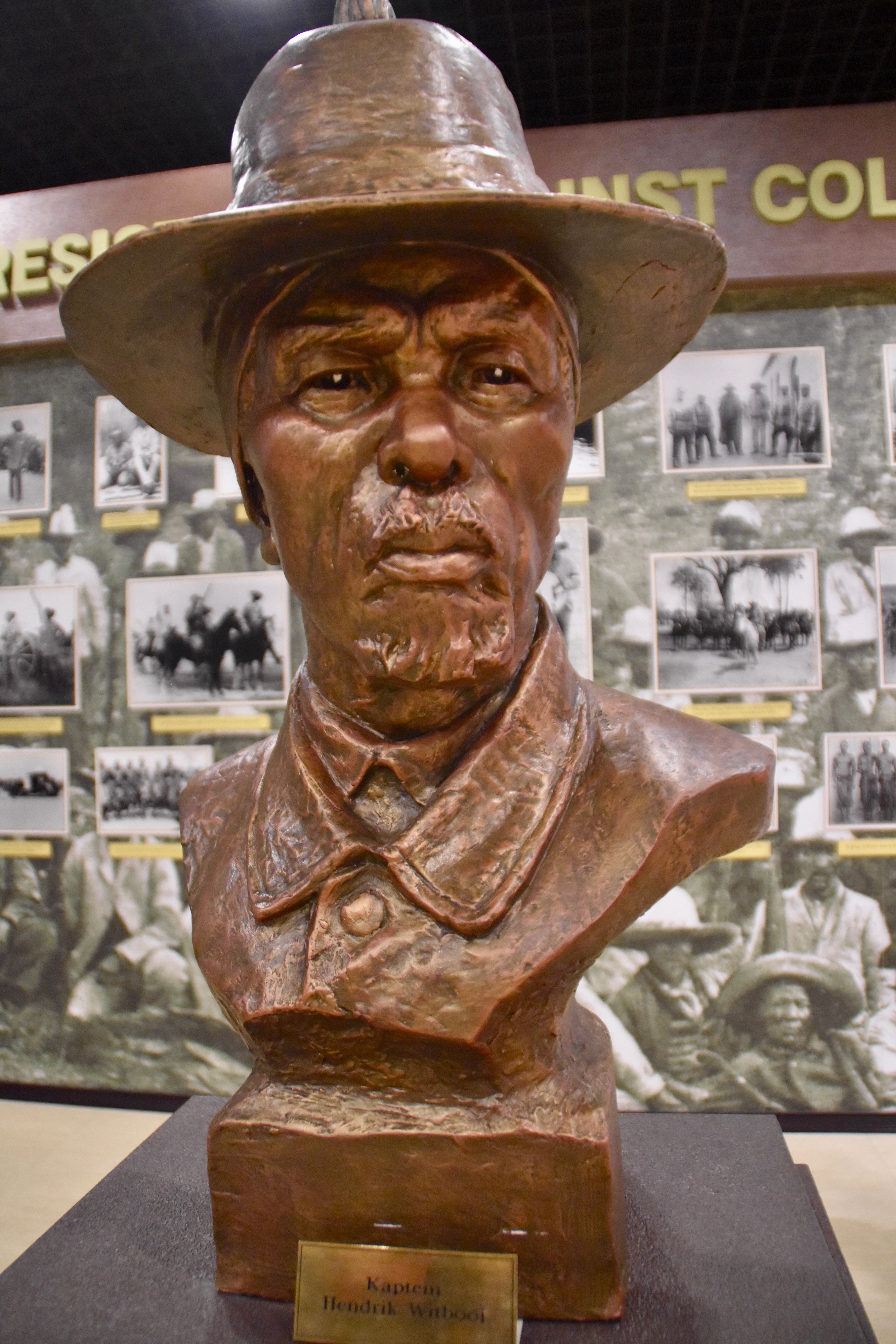
It was not so much the rebellion itself that is commemorated in this first floor of the Namibian Independence Museum, but what the Germans did to the Namibians after they were defeated. The Hereros were literally expelled from the colony, but as they were mostly trapped in the Namib desert they could not make their way to safety. The Germans shot them on sight and poisoned their wells. An incredible 80% of all Hereros were exterminated in what the U.N. and even Germany have accepted was the first genocide of the 20th century, and I naively thought this bad behaviour started with the Nazis. The Namaquas didn’t fare much better – most of them were put in concentration camps which the British had invented only a few years before in the Boer War. Here almost all died as well.
So with that cheerful background let’s look around.
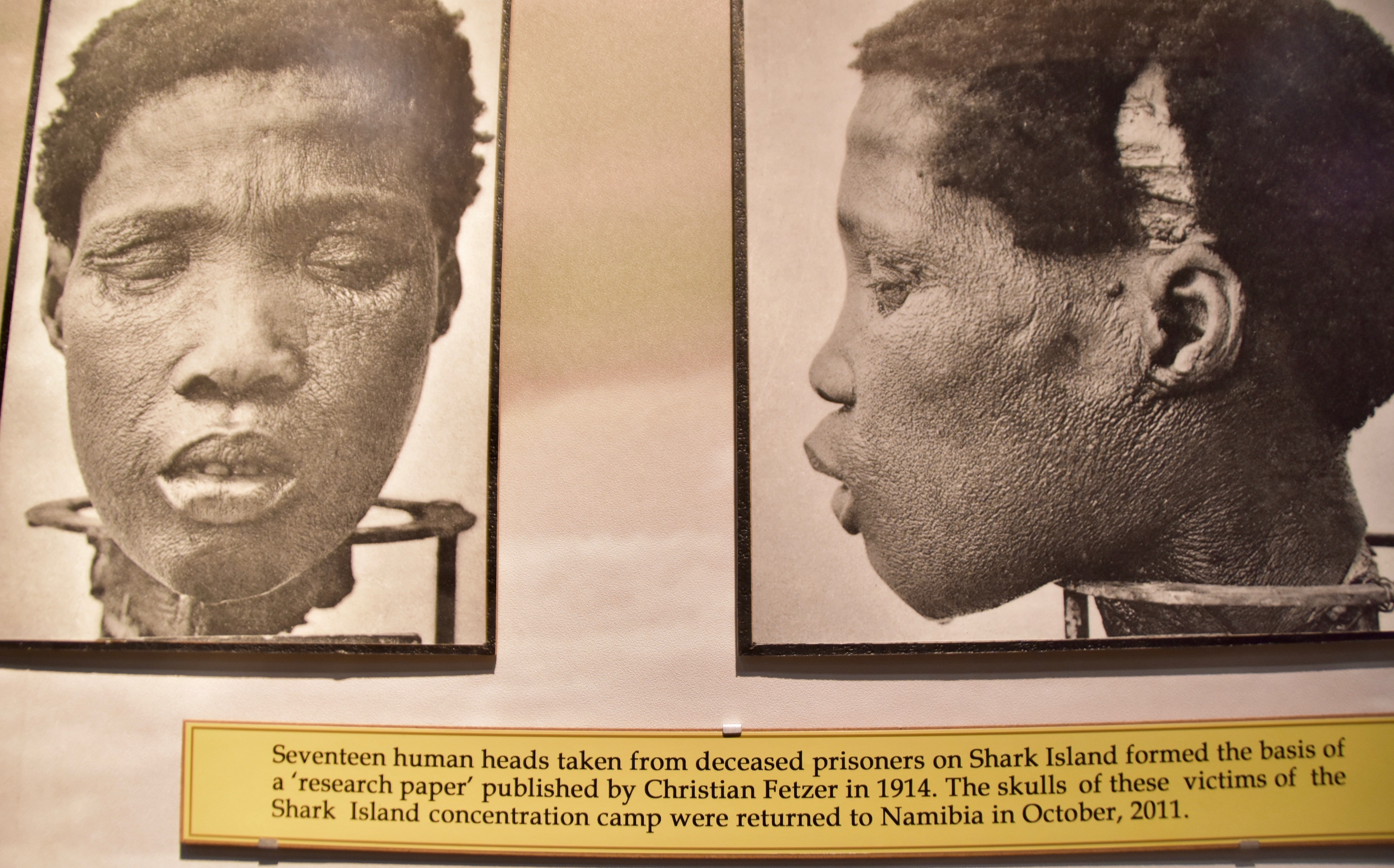
This picture of executed Herero prisoners has become an iconic one to Namibians.
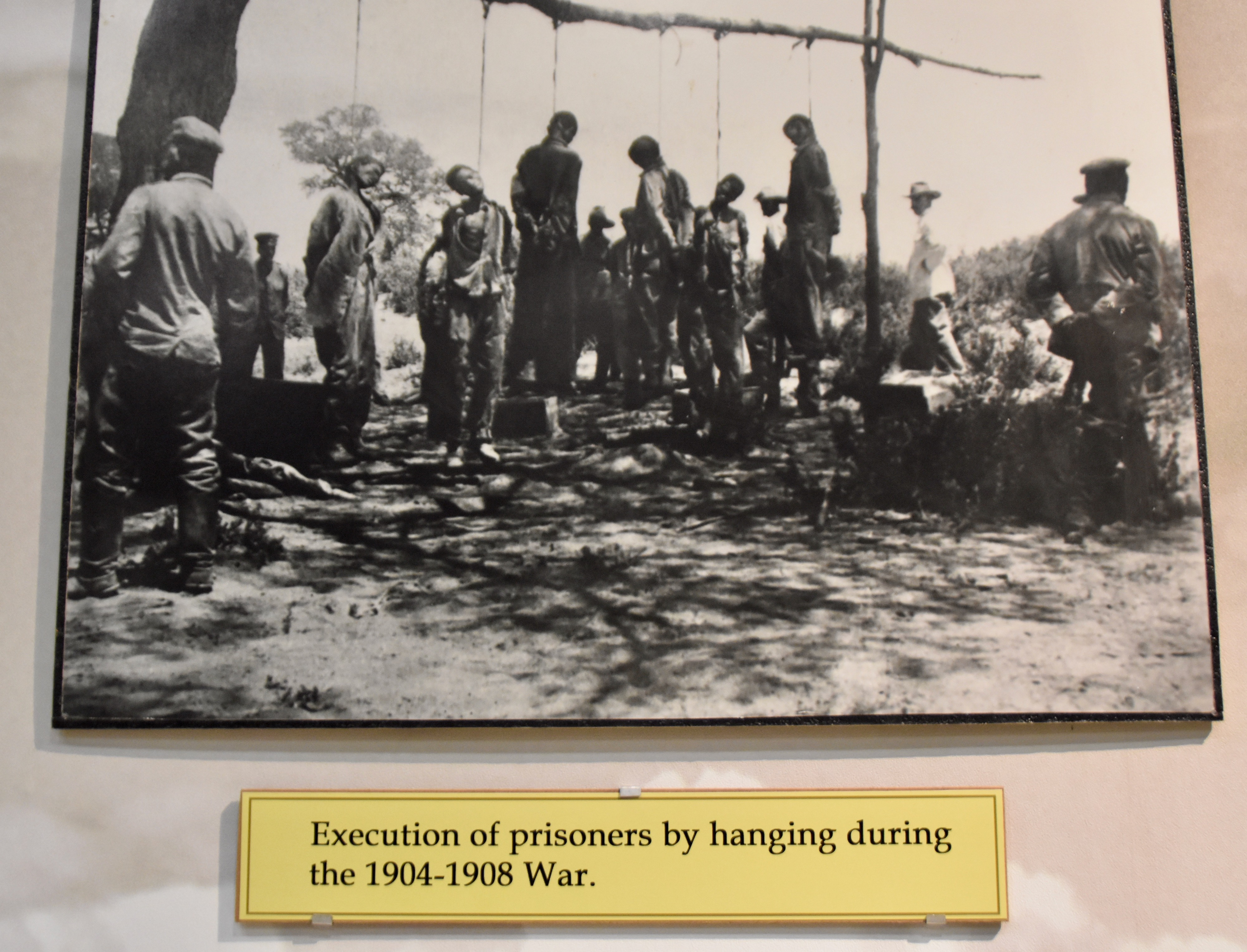
This is a graphic representation of the consequences of a declaration made by General Lothar von Trotha on October 2, 1904 that the Hereros were expelled from their homeland. He was the author of the genocide and not surprisingly the Nazis named a street after him in Munich. This insult was amended later when his name was removed and the street is now Herero Strasse.
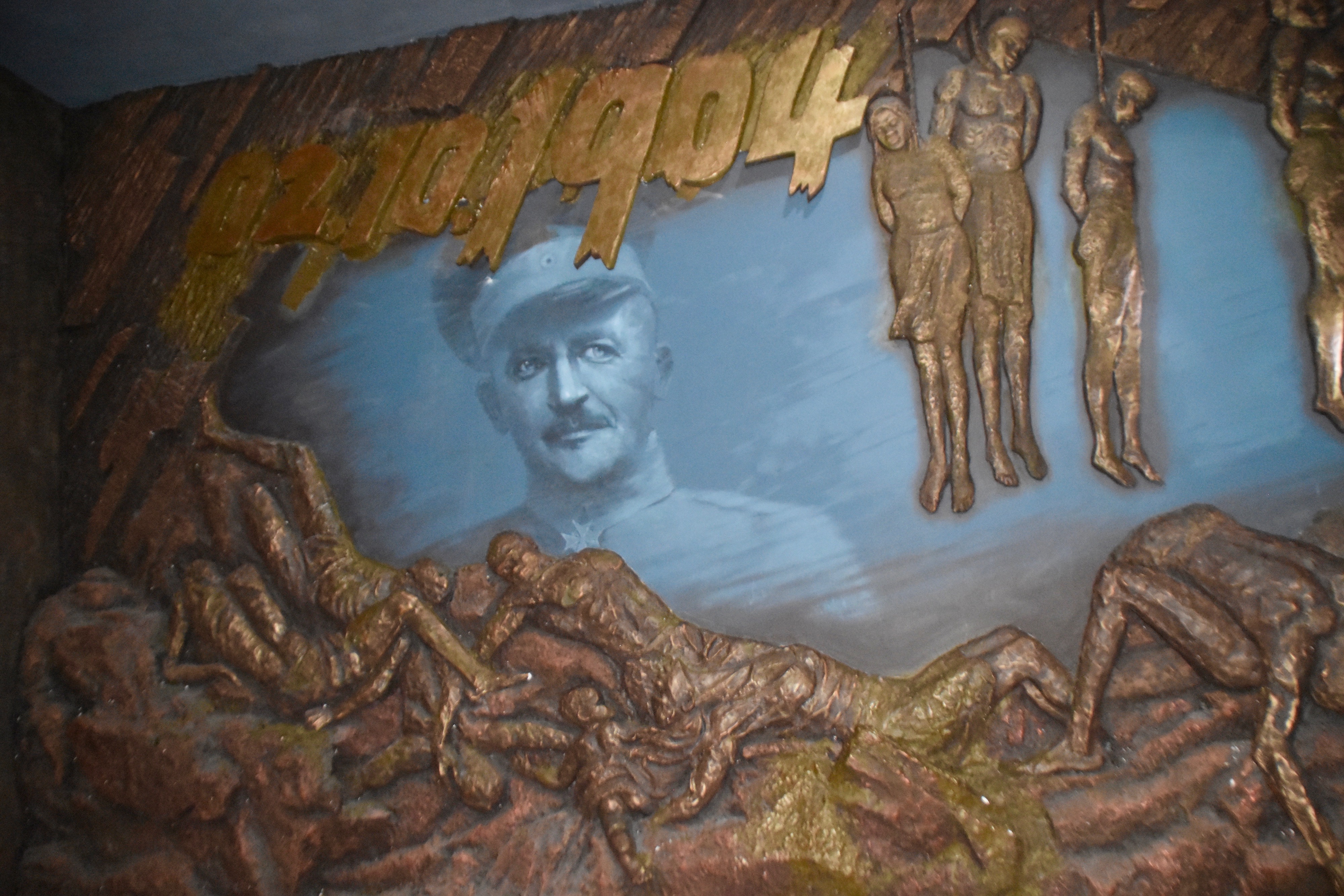
The museum route now veers into a room that is in almost complete darkness. This represents the period in Namibian history, following the rebellions of 1904, when native Namibians became virtual slaves of the Germans. Beside this moving statue dangle examples of the chains the Germans used on the Namibians.
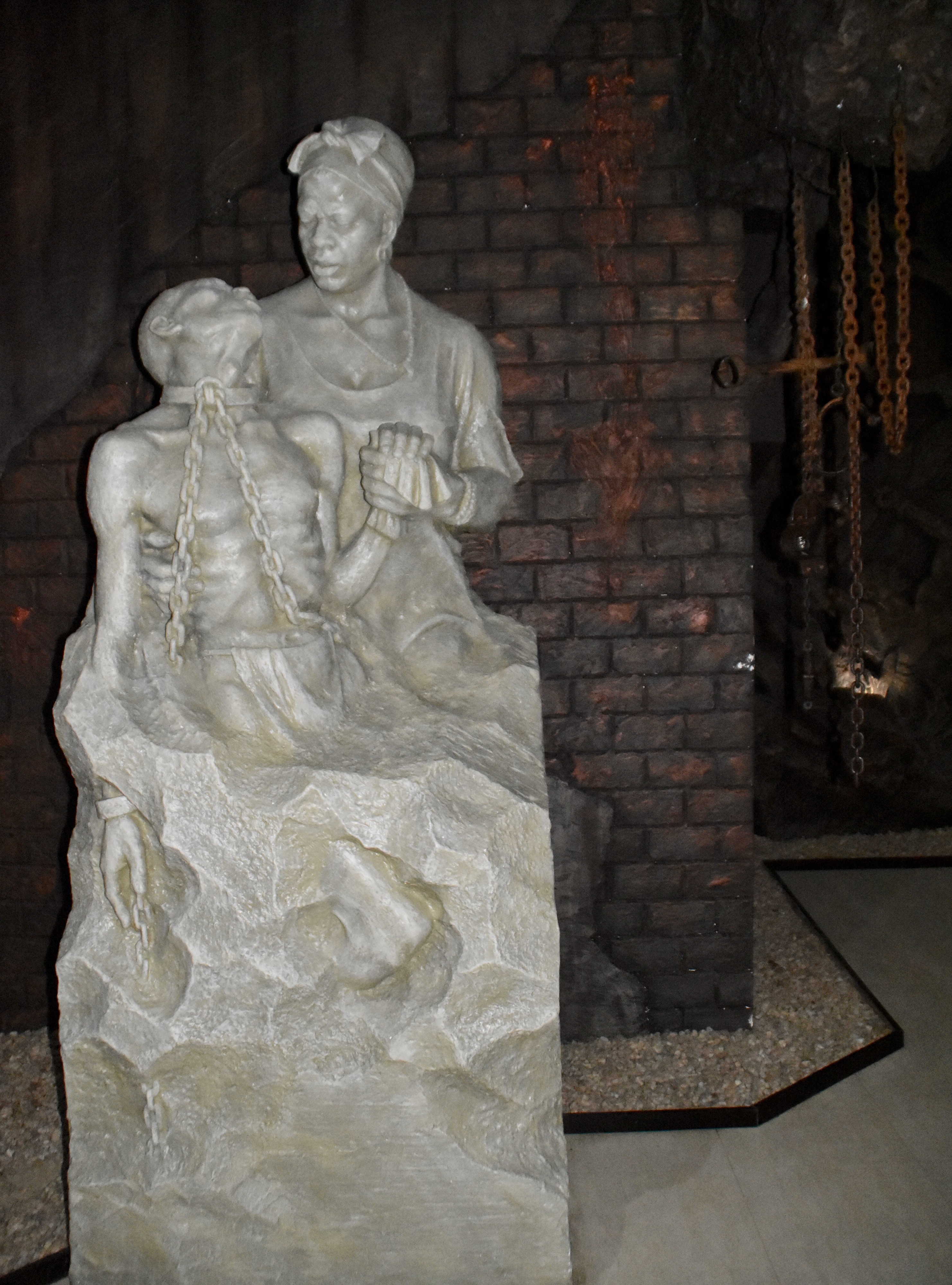
The Germans were themselves expelled from Namibia in WWI by the South Africans who had as good equipment as the Germans and much tougher troops who had grown up in the type of arid country where the campaign was fought. That useless organization known as the League of Nations decided to reward South Africa for its efforts by handing control of Namibia over to it and thus began the second period of oppression – this one much longer than the first.
The native Namibians of course were not consulted once again and very little changed for them as they were put to work in the diamond and gold mines. They were literally worked to death.
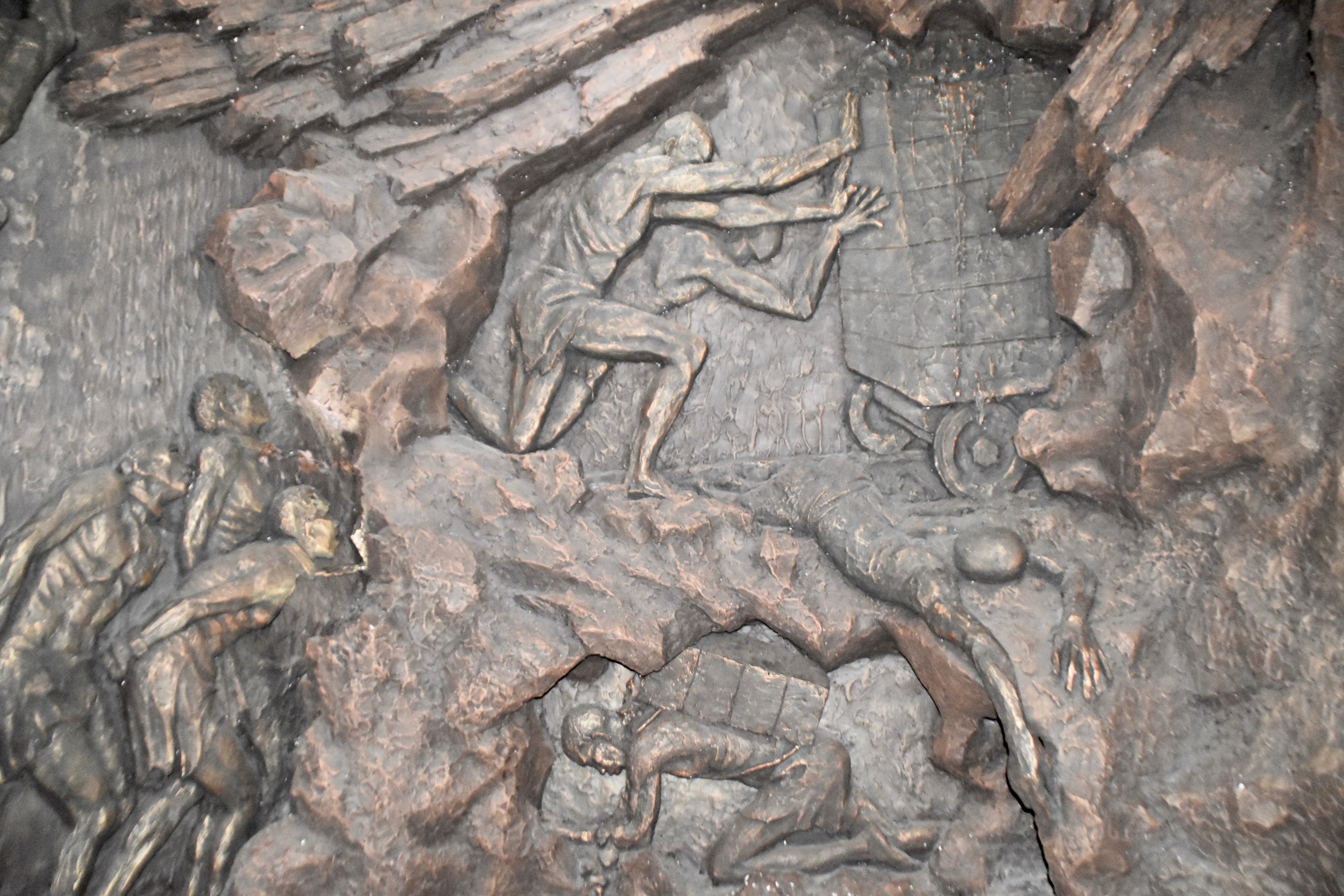
Floor 2, The Fight Against Apartheid
In a second wave of expulsion, any Namibians who in any way protested against the apartheid regime imposed upon them by South Africa and were not either shot or jailed, had to flee the country.
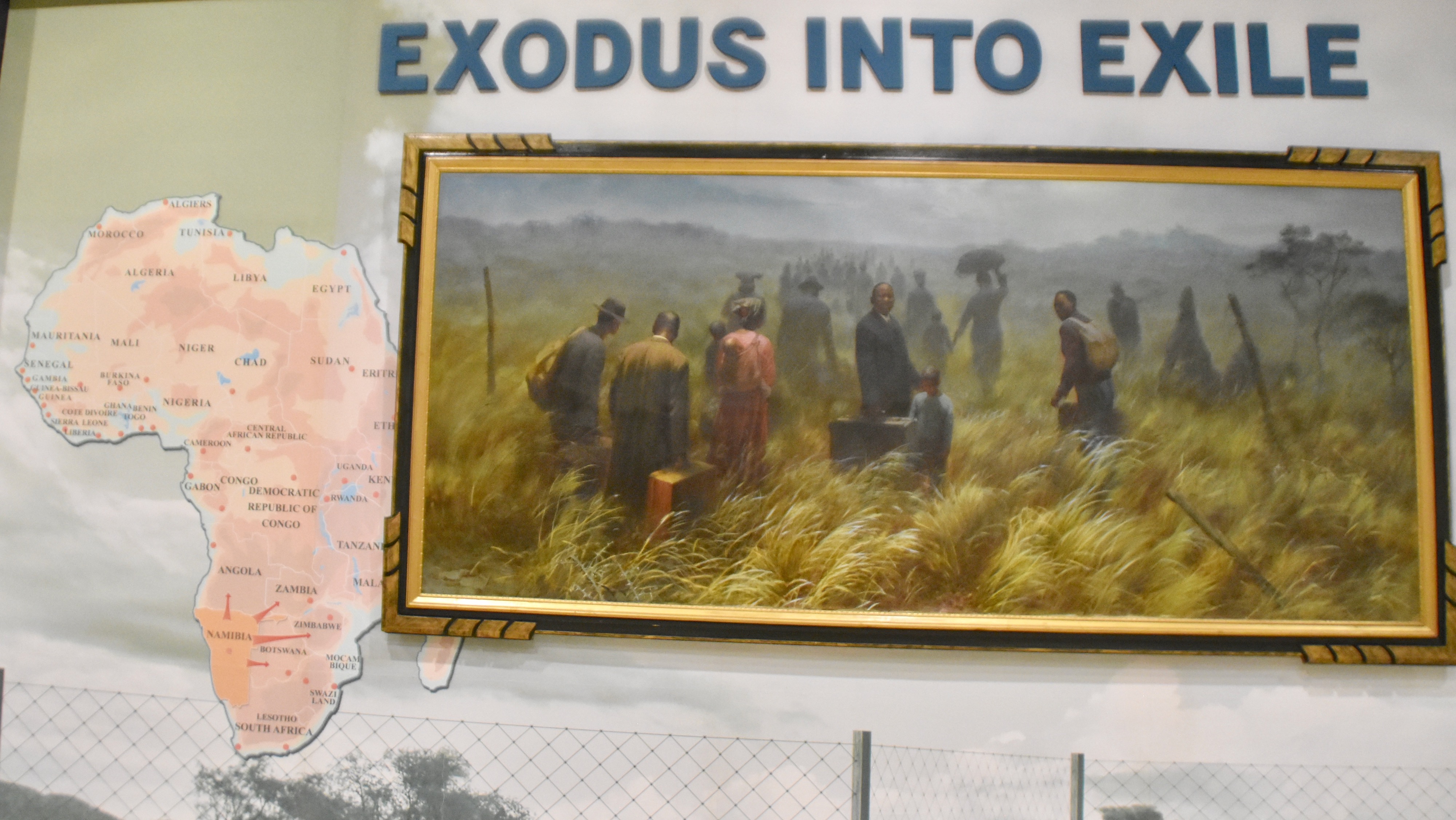
The leaders in exile created the South West Africa People’s Organization (SWAPO) and its military arm the People’s Liberation Army of Namibia (PLAN) and beginning in 1966, started a guerrilla war from bases in Zambia and newly independent Angola.
Despite tremendous international pressure, the South African regime did not release its grip on Namibia and on May 4, 1978 yet another atrocity was unleashed on Namibians. South African fighter jets attacked the principal SWAPO refugee centre in Angola and killed up to a thousand people, almost all women and children. This is the Namibian Independence Museum take on that day, in a mural that has distinct overtones of the works of José Clemente Orozco who also frequently depicted horrible historical episodes in Mexico’s history.
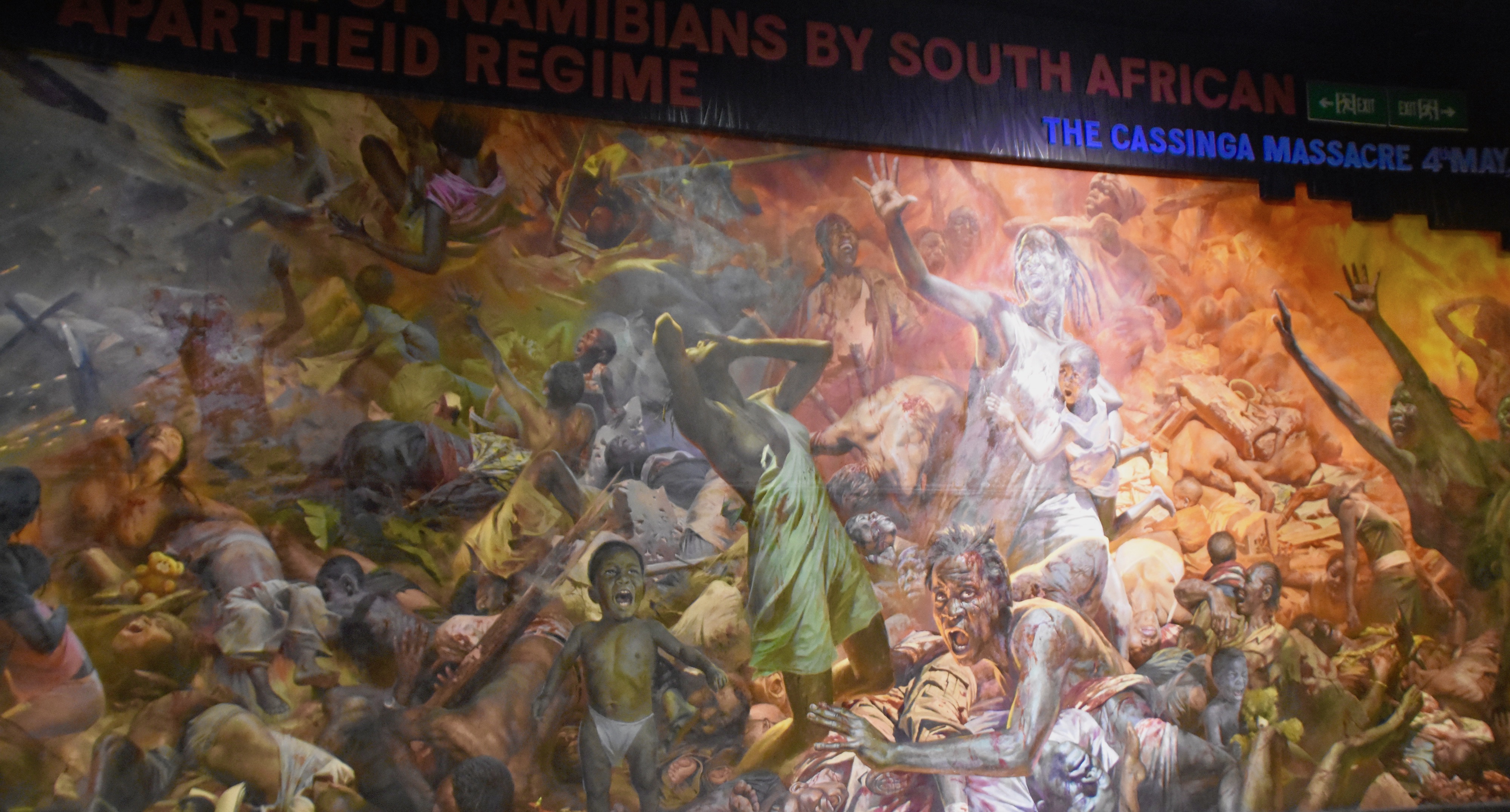
Finally, on March 21, 1990 Namibia gained full independence and Sam Nujoma was able to raise his hand in victory after a struggle that lasted almost twenty-five years.
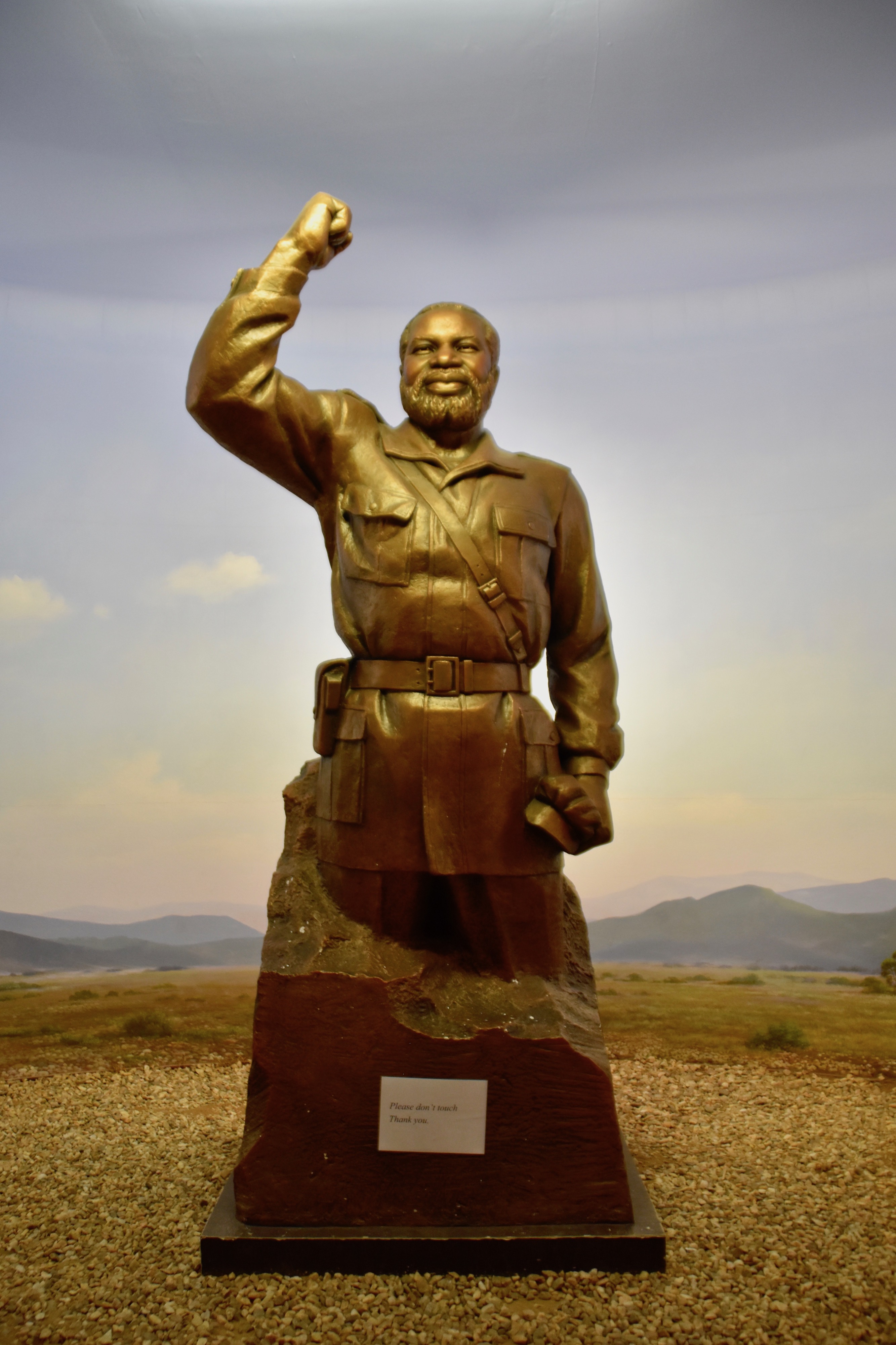
The third floor of the museum is basically a collage that you look down upon that reprises the events depicted on the first two floors ending with modern Namibians, black, white and in between existing in harmony.
Unlike too many African countries to name, Namibia’s adaptation to independence has gone relatively smoothly. Sam Nujoma served three terms and voluntarily stepped aside – he is still alive today. While unemployment and AIDS are major issues, the economy, based on mining, fishing, agriculture and increasingly tourism, is doing OK. While there are many, many different peoples in Namibia, some of whom have had their own battles in the past, they seem to have united in all being Namibians first and members of their designated group, second. That can only bode well for the future of this resource rich country. What doesn’t is the still overwhelming ownership of businesses by whites. Only 6% of the population, they own the vast majority of Namibian companies. How Namibia deals with this disparity may well determine its overall success in the next fifty years. Let’s hope they get it right and I have no clue what that would look like.
Ironically, the two largest sources of tourist revenue for Namibia are South Africa and Germany.
A visit to the Namibia Independence Museum will get you acquainted with the issues this country faces as it moves forward, so start your visit to Namibia here.
For a preview of what’s to come read this post on the entire adventure.

